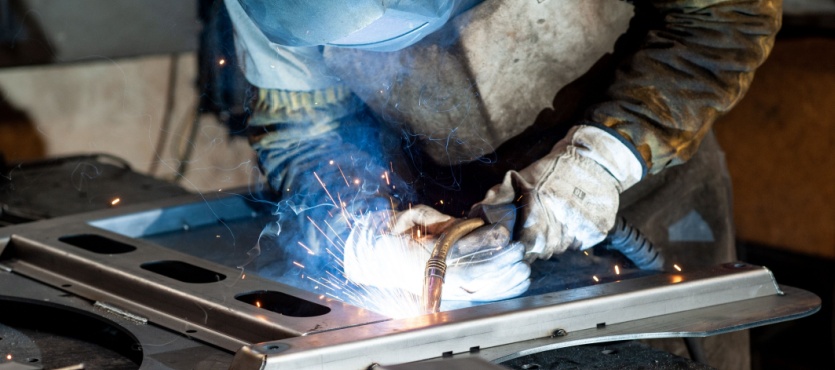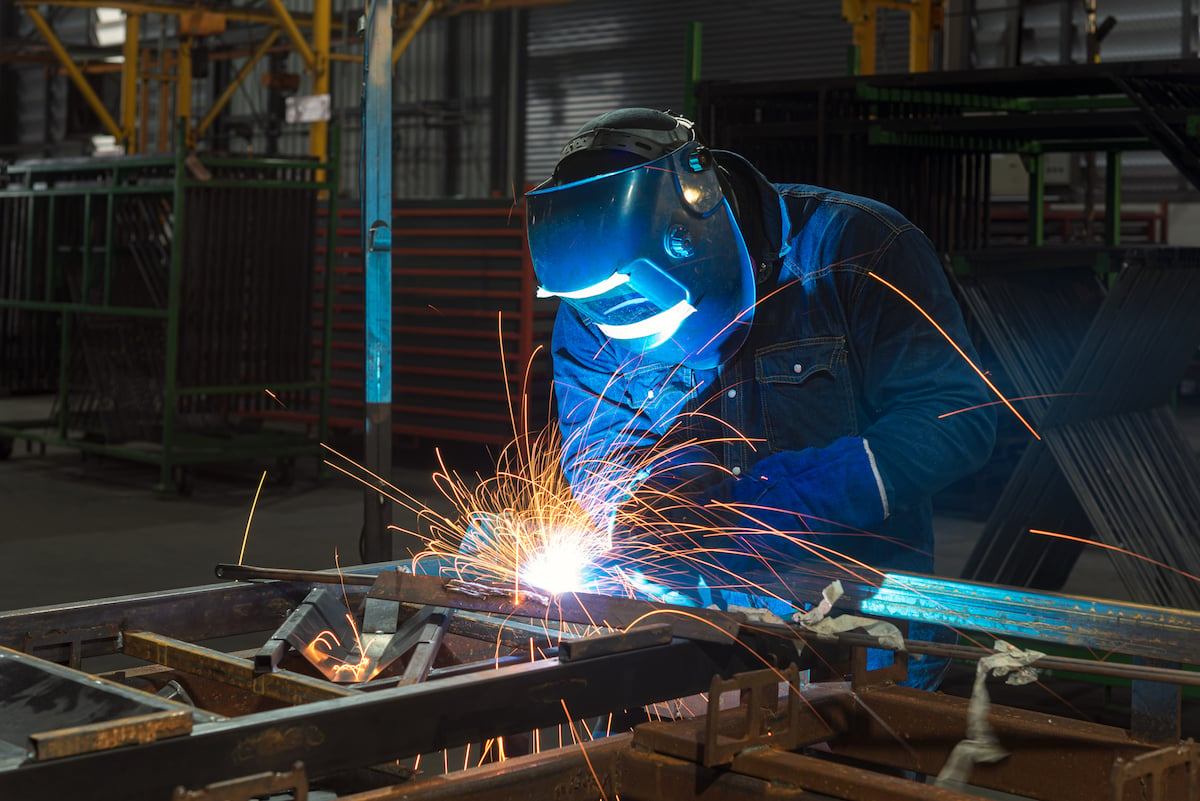A guide to perfect fusion with Montana Mobile Welding and Repair Belgrade Fabrication
Wiki Article
Everything about Welding: Key Insights Into Techniques and Ideal Practices for Success
Welding encompasses a variety of methods, each matched for certain products and applications. Understanding these approaches, such as GMAW, SMAW, and TIG, is crucial for attaining optimal outcomes. The best tools and safety and security practices can not be ignored. As preparation and repairing play critical roles in the welding process, grasping these aspects can considerably enhance the quality of the end product. What are the crucial variables that ensure a successful weld?Recognizing Various Welding Methods
Welding methods incorporate a selection of techniques, each fit to details applications and products. Amongst one of the most common strategies are Gas Steel Arc Welding (GMAW), Shielded Steel Arc Welding (SMAW), and Tungsten Inert Gas Welding (TIG) GMAW, additionally called MIG welding, is preferred for its speed and flexibility, making it suitable for slim materials. SMAW, or stick welding, is favored for its simplicity and effectiveness in outdoor environments, specifically with thicker metals. TIG welding offers precision and control, making it ideal for complex job and non-ferrous steels (Welding). Each strategy has its unique benefits and factors to consider, allowing welders to pick the finest technique based upon the task's needs, product type, and preferred results. Recognizing these strategies is crucial for effective weldingEssential Welding Equipment and Tools
While different welding methods require specific abilities, the best equipment and tools are equally crucial for accomplishing quality results. Necessary welding equipment includes welding machines, which differ depending upon the strategy-- such as MIG, TIG, or stick welding. Protective gear, consisting of safety helmets, gloves, and aprons, warranties security and comfort throughout the procedure. In addition, clamps and fixtures aid protect products in position, making sure accuracy in welds. Consumables like welding poles, wire, and protecting gas are additionally essential components that affect the top quality of the weld. Additionally, tools such as cutters and grinders assist in surface preparation and post-weld finishing, adding to an expert result. Purchasing top notch equipment eventually boosts the performance and effectiveness of welding tasks.Safety And Security Practices in Welding
Proper safety and security practices are necessary in the welding market to protect workers from possible threats. Welders should put on suitable individual protective tools (PPE), consisting of helmets with appropriate shading, gloves, and flame-resistant clothing. Adequate air flow is essential to decrease direct exposure to harmful fumes and gases created during the welding process. Additionally, workers must be educated in the right handling of welding equipment to stop crashes. Fire security measures, such as maintaining combustible materials far from the welding area and having fire extinguishers easily offered, are needed. Regular evaluations of devices and work areas can help recognize possible threats before they cause mishaps. By adhering to these safety methods, welders can produce a safer working environment and lessen risks linked with their trade.Preparing Materials for Welding
Preparing materials for welding is a vital action that greatly influences the top quality and stability of the end product (Belgrade Welding). Proper preparation entails cleansing the surfaces to get rid of contaminants such as oil, dust, and rust, which can endanger the weld. Methods such as grinding, sanding, or making use of solvents are generally employed to achieve a tidy surface. Furthermore, ensuring that the products fit with each other comfortably is necessary; spaces can bring about weak welds. It's additionally vital to take into consideration the alignment and positioning of the components, as this will affect the simplicity of welding and the last result. Ultimately, picking the ideal filler material and making sure compatibility with the base metals is vital for achieving strong, sturdy weldsTips for Achieving High-Quality Welds
Achieving top notch welds needs focus to detail and adherence to ideal practices throughout the welding procedure. Proper joint prep work is vital, making certain surfaces are cost-free and tidy from impurities. Choosing the appropriate filler product and welding strategy based on the base metals is crucial for suitable bonding. Preserving consistent travel speed and angle while welding can promote and protect against problems harmony. Furthermore, managing warmth input is important; excessive heat can result in bending and deteriorated joints. If required, consistently evaluating the welds during the process permits for immediate adjustments. Employing ideal post-weld treatments, such as cleaning and stress and anxiety alleviation, can enhance the sturdiness and stability of the weld, ultimately guaranteeing an effective result.Troubleshooting Typical Welding Issues
Welding often offers challenges that can affect the quality and honesty of the end product. Common concerns such as porosity, inconsistent weld grains, and overheating can occur, each requiring specific fixing methods. Comprehending these problems is crucial for welders to boost their skills and achieve perfect results.Porosity Issues Discussed
Although porosity can often be neglected, it continues to be a vital concern in welding that can endanger the honesty of a finished item. Porosity describes the presence of tiny gas pockets within the weld grain, which can lead and deteriorate the joint to early failing. This issue normally occurs from impurities, dampness, or inappropriate protecting gas protection throughout the welding process. To alleviate porosity, welders must verify that the base products are dry and clean, use proper securing gases, and preserve constant welding parameters. Frequently evaluating the devices and environment can also help identify prospective concerns before they materialize in the weld. Resolving porosity efficiently is vital for achieving solid, durable welds that satisfy top quality standards.
Irregular Weld Beans
Inconsistent weld beads can considerably affect the quality and toughness of a completed item. Various factors add to this issue, consisting of inappropriate travel speed, inaccurate amperage settings, and irregular electrode angles. When the welder relocates as well promptly, a grain may appear narrow and do not have infiltration, while relocating as well slowly can create too much accumulation. Additionally, using oxy acetylene the incorrect amperage can cause either undercutting or excessive spatter, both of which concession weld honesty. The welder's strategy, such as irregular torch motion, can likewise cause uneven bead look. To reduce these issues, welders should concentrate on preserving stable, controlled movements and making sure appropriate equipment setups to attain harmony in their welds. Consistency is vital to achieving strong and reliable welds.Getting Too Hot and Bending Issues
Extreme heat throughout the welding process can result in considerable overheating and contorting concerns, influencing the architectural honesty of the work surface. These issues typically manifest as distortion, which can jeopardize alignment and fit-up, making further assembly challenging. Aspects contributing to overheating include the selection of welding specifications, such as voltage and take a trip speed, along with the kind of product being bonded. To mitigate these problems, welders need to preserve constant traveling rate and suitable warmth input while keeping track of the workpiece temperature level. Furthermore, preheating or post-weld warm therapy can help minimize stress and anxieties brought on by rapid cooling - Montana Mobile Welding and Repair. Routine evaluation and adherence to finest practices are important in preventing overheating and guaranteeing the durability and integrity of bonded structuresRegularly Asked Concerns
What Are the Career Opportunities in the Welding Industry?
The welding market supplies diverse career possibilities, consisting of placements as welders, assessors, instructors, and engineers. Professionals can work in production, building and construction, aerospace, and automotive industries, gaining from solid demand and competitive wages in numerous duties.Exactly How Can I Boost My Welding Speed Without Sacrificing Quality?
To boost welding rate without giving up quality, one need to practice efficient techniques, keep tools, optimize settings, and enhance hand-eye control. Normal training and looking for comments can likewise substantially add to achieving quicker, top notch welds.What Certifications Are Offered for Welders?
Numerous accreditations exist for welders, including those from the American Welding Society (AWS), the National Facility for Building Education And Learning and Study (NCCER), and different industry-specific companies. These qualifications enhance employability and demonstrate skill effectiveness.Just How Does Welding Affect the Characteristics of Metals?
Welding affects the properties of metals by modifying their microstructure, which can bring about modifications in toughness, ductility, and firmness. Heat input and cooling rates during the procedure greatly influence these material qualities.Can I Bonded Dissimilar Metals With Each Other?

Report this wiki page